THE HIDDEN
STORY BEHIND
URBAN COWBOY
Written by Rick Archer
June 2010
|
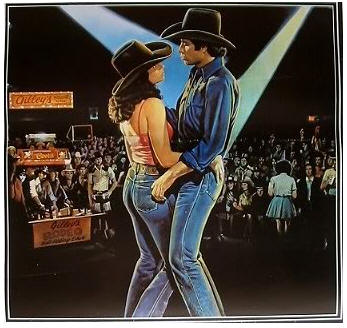 |
|
GILLEY'S SALOON
Gilley's was a fabled saloon that was the focal point
of Pasadena nightlife during the Seventies and Eighties. In its
heyday, Gilley's was the largest nightclub in the world. Featuring
local bands and singers like Mickey Gilley and Johnny Lee,
Gilley's was the honky-tonk that served as the inspiration
for Urban Cowboy.
Sad to
say,
Gilley's is no longer with us. It burned down in an arson fire
in 1989 after a falling out between Mickey Gilley and Sherwood
Cryer, the co-owners. However, back when the movie was
filming, this saloon became just as much a part of Texas lore as JR
Ewing and the
Dallas series that coincidentally was burning up the TV
ratings at the same time.
At first glance, a casual visitor would have a hard time figuring
out why the place was so popular. With its 6,000 person capacity and
corrugated roof, the building looked more like an airplane hanger
than a dance club. Due to its drab interior,
a near-total absence of color and its cold concrete floor, the club
was tough on the eyes. Gilley's was sometimes
described as the "ugliest dance club in America".
The restrooms were dirty and the parking lot
was full of potholes. Not only was the place unattractive, it was uncomfortable.
Even Mickey Gilley admitted the place was a complete dive. "It was filthy," he
said. "When it rained, there was water in there. Try dancing in
mud puddles. When it got cold,
it was cold in there. When it got hot, it was hot in there.
Sherwood Cryer made the club bigger, but he didn't make it better."
 |
Gilley's
was a very rough place. This rundown club was known for plenty of
fighting. It was no surprise the clientele preferred the
"Outlaw Country" sound because there were a lot of angry people who
considered this place their personal fighting ring. On any given Saturday, you might see more brawls than your average ice hockey match.
One regular said, "With all the lowlifes who come in and drink
themselves silly, if they don't get into at least one scrap, they
think their weekend is wasted."
Sherwood
Cryer was once asked about the BIGGEST free-for-all he had ever
witnessed in his place. One time a teacher's (!) convention
had come to Houston. On a Saturday night a busload of teachers, men
and women from all parts of the country, had shown up to take in the
Gilley's experience. Like everyone else, they were curious as the club's fame was beginning to soar. They
all went to sit in one of the corners of the cavernous club.
Thanks to those bratty kids, teachers must have a lot of frustration to let go of. Pretty soon
they began to have too much fun. These teachers got liquored up and began
to fight, first with each other. Then they took on the
regulars! Uh oh.
Cryer sent over two, then four, then eventually every bouncer and
large patron he could find in an attempt to restore order, but these
drunken teachers ended up beating the crap out of every bouncer and
wannabee bouncer in that melee.
|
|
Finally
Cryer had to call in the Pasadena Police and the EMTs. The Pasadena
Police arrived in force with their riot helmets on and brandishing
serious-looking batons. When the schoolteachers found
themselves being surrounded by these officers, they reacted by
attacking the cops (!) as well! Eventually many of these rowdy
educators were hauled off to jail. Afterwards, to Cryer's
dismay, the cops shut down the club for the rest of the night.
Nevertheless, despite its frequent fighting and dilapidated
appearance,
there were
plenty of people willing to overlook the club's shortcomings.
From
the moment the movie started filming,
Gilley's
began to rival the Eiffel Tower as a must-see tourist attraction.
Every night hundreds of regulars showed up to drink, dance,
fight, flirt, make out, bullshit, shoot pool, and see who
would get their nuts cracked on El Toro, the club's famed
mechanical bull. Bob Claypool of the Houston
Post wrote: "Gilley's was, quite simply, the most Texan of
them all, the biggest, brawlingest, loudest, dancingest, craziest
joint of its kind ever."
|
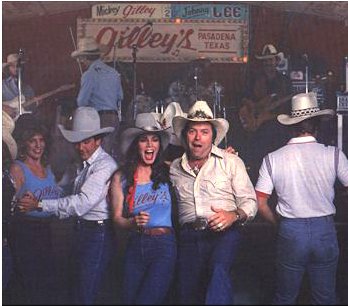 |
Sources:
Mother of All Honky-Tonks
by Christopher Gray
Closing
Time : Gilley's Sherwood Cryer
by Carlos Carbillo
Looking
for Love by
Gregory Curtis
|
|
 |
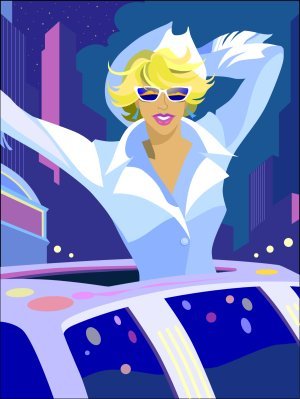 |
CULTURAL TRENDS
There is
a natural desire in every human being to feel popular and
attractive. There is a lot riding on popularity.
'Popularity' can mean power, security, attractive mates, interesting
jobs, and the chance to hang out in the most influential circles of
life. Popularity means friends. The more friends you have, the
more opportunities there will be.
We all
want popularity, but where do we find it and how do we get it?
American Business is very interested in controlling the keys to
popularity. If a business can control popularity, it is
guaranteed marketplace success.
Through
the use of cultural icons like movie stars, rock stars, and media -
both print and broadcast - the advertising geniuses on Madison
Avenue do everything in their power to manipulate 'popularity'.
It is their job to convince the world the products they sell hold
the true key to popularity.
|
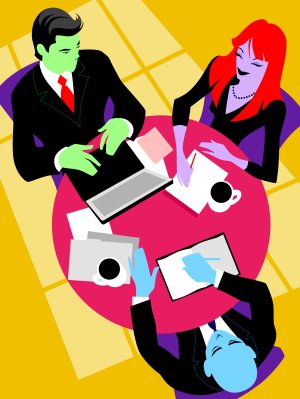 |
|
So the question we have to ask is this:
How on
earth did a complete dump like
Gilley's ever become the national
symbol for popularity?
The purpose of this
chapter is to explore the answers to this very intriguing
question.
|
NEW YORK CITY
If I can make it there,
I'll make it anywhere,
It's up to you, New York, New York.
Our story
begins in New York, long considered the
nation's center of culture. New York
City has been the birthplace
for
many cultural movements. As an example, did
you know that American Jazz largely got its start in New York
City? For that matter, so did Charleston, Swing Dancing and the Lindy Hop.
We call it "East Coast Swing" because New York City is
where Swing developed.
If you
want to make something 'popular', the place to start would be NYC.
New York City is home to Wall Street, the New York Times, national magazines, book
publishing, and all the major networks.
Over
time, New York has become America's nerve center for all things
cultural. It is the
absolute best place to be anytime you want to "start spreading the
news".
|
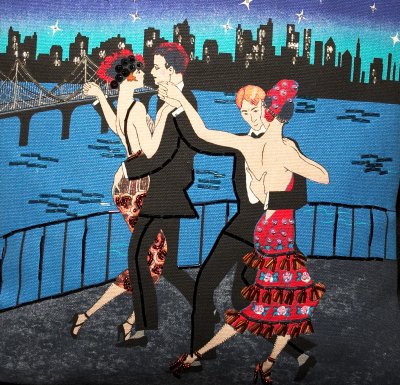 |
FASHION AND
ADVERTISING
Not
surprisingly, the Madison Avenue advertising industry and the
Garment District fashion industry are also located in New York.
These two powerhouse industries are so closely interconnected, it
sometimes becomes difficult to tell them apart. One creates
the product and the other sells the product, but neither could be
effective without the other. Fashion and Advertising work hand
in hand.
As you
might imagine, no single industry is more interested in exploiting
'popularity' than the fashion industry. The same can be said for
advertising.
Due to my
near-total lack of fashion sophistication, I never thought the day
would come when I would be called upon to comment on fashion, but I
think I understand the basic concepts well enough to make my point.
For one
thing, I realize that "fashion" is part of the
eternal struggle to be noticed in a crowded world. Like the peacock
who struts his colors, people have used clothing as a way to draw
attention since the beginning of time. I also realize that "beauty"
is in the eye of the beholder".
That said, I have always
believed the Fashion Industry has a serious uphill struggle to
overcome.
Over the years, I have occasionally visited upscale clothing stores
and taken a peek at what is considered fashionable. A
practical man at heart, I typically shake my head in consternation.
Much of what I see is so ugly!
I think to myself, "Who on earth would ever buy this stuff?"
|
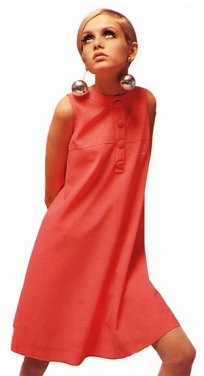 |
Over the years, I admit I have followed the dictates of
fashion now and then. I remember buying bell bottoms even though I cringed a little. And I wore some
of those questionable Disco outfits during the heyday.
However, it wasn't until the Urban Cowboy era
came along that I finally found my
niche... oh boy, blue jeans are in! A committed blue jeans kind of guy,
once I realized my existing wardrobe would last forever with
proper care, that was
the day Madison Avenue and the Fashion Industry
lost their hold on me.
As the years passed, not only did my love affair with blue
jeans continued unabated, but my daughter grew up to become a teenager
complete with opinions and the willingness to offer them.
One day
my daughter casually pointed out I would never be considered
'fashionable' wearing those same boring clothes all the
time. That was the moment I realized that Madison Avenue had gotten inside of
her head.
I
laughed and reminded her that Marie Antoinette, the leading
fashion symbol of her time, had lost her head. Marie's excellent fashion sense was counter-balanced by her lack
of common sense. Fashion
can only take you so far.
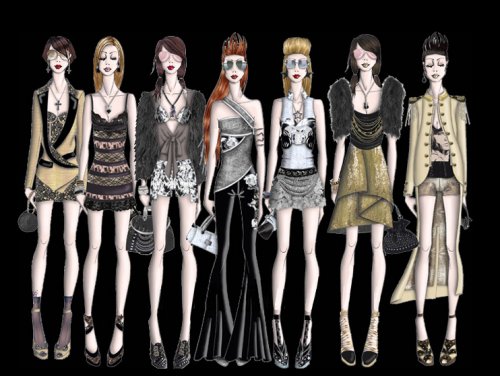 |
Maybe so, my daughter replied, but the most popular girls at
her high school were also the best-dressed... surely that
was more
than mere coincidence. I smiled.
I knew where this was headed. My daughter was about to hit me
up for money for clothes.
This is exactly why Madison Avenue is so obsessed with the
youth culture. Old people like me might care less about being
popular and wearing the latest styles, but the young and impressionable are fair game.
They still have mates to find, jobs to obtain, and things to
accomplish.
Madison Avenue had done its job on my daughter. She and the rest of our nation's youth were
convinced the elusive goal
called 'popularity' was something worth pursuing.
All the
kids had to do was figure out how to be
popular and their life would be set.
No problem. Madison Avenue
promised it would be right there to
tell them which products were sure to make them "the most
popular". At the very top of that list would be the "In
Clothes" of the day, the clothes that only the best
people wear... for example, the kids who are popular.
|
Anybody
can sell warm clothes to a shivering man.
But it takes a real genius to sell impractical clothing of dubious
attractiveness that no one needs.
The
secret of selling stuff that no one needs is to convince people that
buying a product will magically make them "popular".
Advertising people are paid enormous sums of money to
figure out
ways to get ordinary people to pay hard-earned cash to buy clothing
others might consider 'worthless'.
Code
words for 'popularity' begin to creep into our language. New Look. Cool. Hip. Happening.
Chic. Edgy. Trendy. Emerging. Changing. Fad. Rad. Hot. Funky.
Stylish. et cetera et cetera.
If the
Madmen could just find some way get the public to bite on these
words, they might be able to sell a product that has proven
difficult to move. Wear something Stylish enough and
you too can become a hip hop happening popularity
machine.
So what does this all have to do with Gilley's?
Be patient.
It isn't easy explaining how
Gilley's became the national symbol for popularity.
|
TREND SPOTTERS
Trend Spotters are very shrewd people who make it
their business to identify cultural trends in their early
stages in order to take advantage of the momentum. These people are
constantly on
the prowl for any possible angle that
will help them sell more clothes that no one needs.
Once upon a time, fashion designers used their instincts to predict what the public would buy.
Unfortunately, this approach had its shortcomings.
Every wrong guess left manufacturers with a lot of unsold
clothing on their hands. An example from my youth were
the "Nehru jackets". I remember every teenager
laughing their heads of. That item became an expensive
gamble that failed.
Every mistake was so costly - not just in money, but in
reputation as well - that the fashion designers began to
seek ways to cover their bet. They began to rely on market research to make their tough process of
guessing what would sell a little easier.
Along the way, even the experts had to admit that
"predicting what might become cool" wasn't very easy.
Wouldn't their jobs would be easier if they could simply dictate to the
American public what was cool? When
it came to manipulating the American zeitgeist, why leave anything to chance?
After all, it is so much easier to make money when you
already know
what is coming next.
All they had to do was find something that was absolutely
certain to become the next best thing. Then one day it
happened... by some miracle they found The Next Sure Thing... Everybody agreed it couldn't miss.
Take a guess.
Gilley's!!!
It has
long been rumored that many of the cultural trends that
affect the entire nation are orchestrated behind the scenes
by some very shrewd people in the Big Apple.
Thanks to the powerful presence of Wall Street, Madison Avenue,
and the New York print and broadcast media, there are forces
at work in New York that are unrivaled anywhere else in the country.
Why bother guessing what the next cultural trend will be when all you have to
do is go out and create it yourself!
This story
will explain this process in detail. All the experts agreed -
with just a little help from Madison
Avenue, Gilley's was going to be the absolute next
best thing.
|
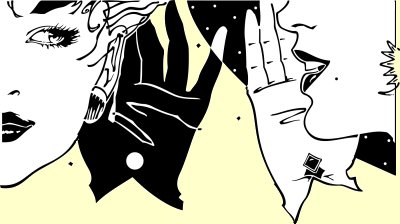 |
|
|
|
CLAY FELKER, The
Ultimate Trend Spotter
It all
started with Clay Felker.
Clay Felker was the legendary editor of New York
Magazine and later Esquire who knew
everybody in the business: media, politics, theater,
Hollywood, you name it.
Intimately connected to the pulse of America,
Clay Felker was one
of the most influential journalists of his time. In addition
to his work at New York Magazine, he helped found the
The Village Voice as well as Gloria Steinem's
Ms Magazine.
Felker
was once quoted in his Duke Magazine profile about how
California—like New York—was prime territory for
trend-spotting. Felker said, "Journalism is very often about
the future."
This was a fitting observation from someone who time and again
practiced what he preached. Felker would see something that
was ready to happen, then do something to make sure it actually did happen.
Clay Felker made it his business to be the spark that lit the bonfire.
|
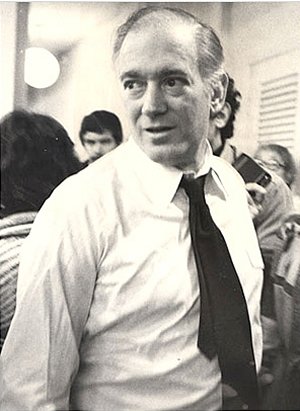 |
As a magazine editor, early in his career, Felker made his reputation by telling it like it is without regard for
negative backlash. He was willing to step on toes. As
one example, Felker published the first
account of how the mega-wattage of newspaper, magazine, and
television coverage, abetted by the PR resources of the
fashion industry, had created an entirely new kind of New
York socialite.
Society people take their status seriously, especially "New
York" Society people. Previously New York's Society people had
traced their importance to money and their Protestant family
lineage. The nerve
of that upstart Felker to embarrass New York's power elite like
that!
His article not only angered the Old Money
establishment no end, it thrilled the up and comers no end
as well. They liked being noticed.
Best of all, it amused
all the New Yorkers as much as any story in ages. Maybe
those pompous old crows who thought they were so special weren't
as popular as they believed!
Felker defined
the form of the modern city magazine. Felker
was a "writer's editor". He encouraged his
writers to address modern life in a bold, vividly
descriptive style. Felker didn't just sit back and wait for
stories to land on his desk. Felker's
keen eye resulted in many powerful stories
about life in the big city. The ultimate "trend
spotter", Felker made it his business
to notice something interesting, then go find a writer to poke his nose into it.
For example,
Felker suggested to reporter Gail Sheehy (later his wife) that she
investigate prostitution in New York, but perhaps from an
unusual angle. Sheehy didn't
just get out her notepad and do interviews. Instead
she followed Felker's idea and took to the streets
wearing hot pants, white vinyl boots and a revealing top.
Adding in puffed up hair and too much makeup, the disguise worked perfectly.
Gail Sheehy was able to mingle
with the “working girls” and get some straight talk.
What she brought back to Felker at his magazine was an
astonishing eyewitness account of the trade.
Soon
Felker's magazine was on the tip of everyone's tongue. What
would Felker print next?
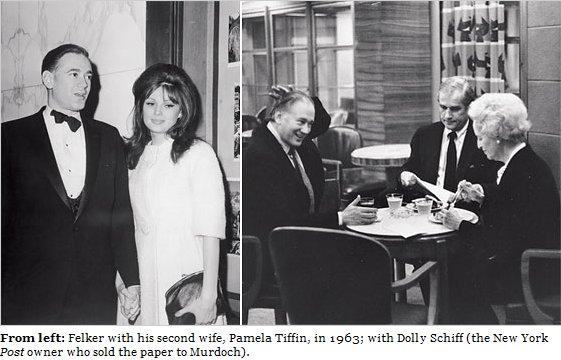 |
Gail Sheehy wasn't the only writer who benefitted from Felker's
vision. Clay Felker's ideas helped many writers become
established. Tom Wolfe, the best-selling author, was one of his
first superstars.
Wolfe turned a Felker suggestion into The Electric
Kool-Aid Acid Test, a fascinating book on the
counter-culture that was a favorite
of mine back in college. Tom Wolfe went on to become one of
America's best-selling authors with books like Bonfire of the Vanities
and The Right Stuff to his credit.
Despite
his success, Wolfe never forgot who
his mentor was.
In a 1993 interview with The Washington Post, Tom Wolfe
called Clay Felker "the greatest idea man that ever
existed".
Sources:
Felkerism,
by Kurt Andersen
A City Built of Clay,
by Tom Wolfe
|
 |
LIGHTNING STRIKES ONCE
In 1975,
Nik Cohn, a writer for Felker's New York Magazine,
penned a story about
a world of
lower-middle-class, lower-IQ youths who lived in Queens, Brooklyn, and the
Bronx in the mid-1970s. These kids lived for Saturday nights in disco
clubs.
Titled "Tribal
Rites of the New Saturday Night",
Cohn's
story was published in June 1976.
This article served as
the source material for the movie Saturday Night Fever
which debuted in November 1977.
As it turned out, Clay Felker, then editor of New York
Magazine, was the inspiration behind the story. However,
Felker did not sell the movie or make any money off of it.
The man behind the movie version was Robert Stigwood, a music
producer and the manager of the music group Bee Gees.
Robert Stigwood had a three-film contract with John Travolta. He parlayed
his Travolta/Bee Gee connection into a film with Paramount Pictures.
|
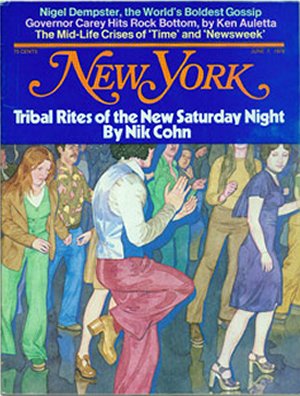 |
Robert Stigwood got his start mainly as the manager of the famous
Rock band Cream starring Eric Clapton. He
parlayed his success in the music industry into productions both
stage and film. Among his stage credits are
Evita,
Hair, Pippin,
Jesus Christ Superstar, and
Sweeney Todd.
Among Stigwood's film credits are
Grease, Jesus Christ Superstar,
Tommy,
and
Saturday Night Fever.
As you can see, Stigwood was no stranger to success.
Robin Gibb
of the Bee Gees said this in
the Observer
Music Monthly January 2008:
"The idea for the film
that became Saturday Night Fever started when our
manager, Robert Stigwood, saw an article in New York magazine
titled 'Tribal Rites of the New Saturday Night'
by Nik Cohn. The article talked about teenagers going to dancing
competitions.
When they first started
dance rehearsals for the film with John Travolta, they were
using our song 'You Should Be Dancing,' which had
been released the previous year.
We were mixing a live
album in France. Robert rang
me up and said the
song was great. Then he asked if we had any other
songs we could contribute.
So we
got to work. In the end we had five
new tracks - 'Staying Alive,' 'How Deep is
Your Love?,' 'Night Fever,' 'More
Than a Woman' and 'If I Can't Have You'
(recorded by Yvonne Elliman) - plus the previously released 'Jive
Talkin" and 'You Should Be Dancing.'
Seven songs total.
It was also our idea to call the movie
Saturday Night Fever, because the competitions
were on Saturday and we already had the track
on the music album 'Night Fever.'
Disco
was primarily an urban subculture phenomenon found in the big
cities. Disco had been around for
several years before Saturday Night Fever came out
though it operated just beneath the radar of
mainstream America. Oddly enough, in 1977 when the movie
debuted, many people in the music industry
believed that
Disco with its
uncreative electronic music and vapid lyrics was on its way
out. However, the movie changed their minds in a hurry!
So why was Saturday Night Fever
so popular? While
most people only remember the
dancing and the catchy Bee Gees music, many forget that Saturday Night Fever had
an excellent script with richly drawn characters.
The
irony is that the story that inspired the script turned out to be a
complete fake! Nineteen years later in 1996, Nik Cohn confessed that he made the
characters up from his own imagination. Rumor has it he based
his main characters on a Disco-version of "Rebel Without a Cause".
John Travolta as James Dean. Too funny. Whatever his Muse, it worked.
No one
had expected much from Paramount’s scrappy low-budget disco movie, but
this hard-hitting
story of directionless youth with Travolta as the
dancing James Dean packed quite a punch.
Saturday Night Fever struck a chord with audiences all
over the world. The movie became a box office and pop cultural phenomenon.
It also sold a lot of records.
|
|
|
 |
LIGHTNING STRIKES
TWICE
In September 1978,
an article titled "The
Ballad of the Urban Cowboy and America's Search for True Grit" appeared in
Esquire Magazine.
Aaron
Latham told a story about
a world of
lower-middle-class, lower-IQ youths in Pasadena, Texas, in the mid-1970s who lived for Saturday nights in
country-western
joints. Does that tagline sound vaguely familiar?
From the moment the article appeared,
there seemed to be striking parallels between Saturday Night
Fever and Urban Cowboy.
Indeed,
look at the headline on Esquire Magazine. The two
movies were linked right from the start. This was no coincidence. The man behind this
new story was none
other than Clay Felker, now the editor of Esquire.
Aaron Latham was a hip Washington DC resident married to long-time
60 Minutes correspondent Lesley Stahl. Although
Latham was born in West Texas, he had been based on the East Coast
for most of his adult life. As it turned out, Aaron Latham had
never even heard of Gilley's and didn't know a thing about
the place. So what got him interested? Clay Felker.
|
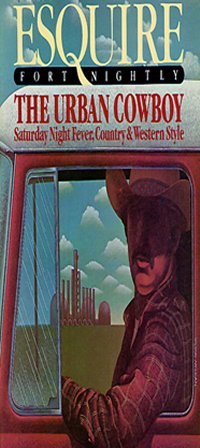 |
|
In the
summer of 1978, Latham was awakened
at 3 am in the wee hours of the morning by a long-distance phone call.
It was Clay Felker calling from a hotel room in Houston, Texas. Felker told Latham to hop on a plane and visit
Gilley's
Nightclub in Pasadena immediately.
At
Felker's urging, Aaron Latham took the next flight out of Dulles. Latham had been told to introduce himself to Sherwood Cryer, co-owner of
Gilley's. As the two men walked around the club, Cryer
advised the New York-based writer on various angles for the Esquire
article.
Sherwood Cryer
had a big smile on his face. Cryer didn't mind walking this
stranger through the cavernous paths of Gilley's one bit.
Cryer had a strong hunch
this story was going to put Gilley's on the map.
And where did he get this hunch from? Clay Felker.
Felker had taken Cryer into his confidence the previous night and
shared a couple of very interesting secrets.
|
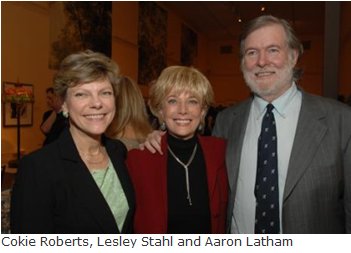 |
|
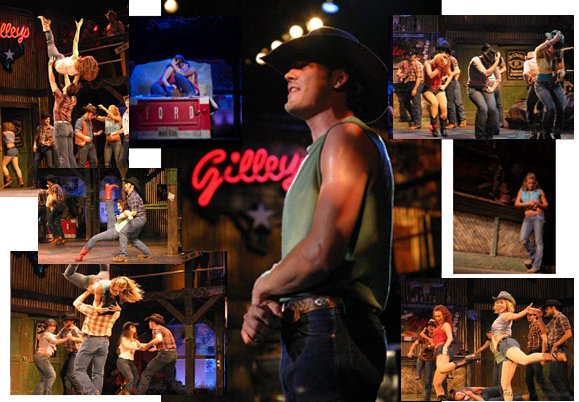 |
Gregory Curtis, Texas Monthly:
"In 1978 Clay Felker
was the editor of Esquire. Our publisher Mike Levy and my
predecessor as editor Bill Broyles invited him to Houston
that summer to speak at the Rice University Publishing
Program. Instead of an honorarium, Felker wanted to be shown
around the famous boomtown. So they ended up at Gilley’s
late one night.
At Texas Monthly, we had discussed writing about Gilley’s
but hadn’t done it. One of the aggravations of journalism is
that you can be so familiar with something that you miss a
story that is right in front of your face. That was what we
did with Gilley’s, and after twenty years maybe we now can
admit it.
Felker saw the mechanical bull and the cowboys dancing with
a beer bottle in their back pockets and their girlfriend’s
thumbs hooked in their belt loops. He was so struck by the
place that back in his hotel room late that night, he called
writer Aaron Latham.
Latham had been born and raised
in Spur, Texas, but was then living in Washington, D.C. Felker told him to get out of bed and catch the first
airplane to Houston."
|
Steve Brill, The American Lawyer:
"Clay would come in at
New
York Magazine at 10:30 a.m. after a long breakfast. He
would invariably
have four ideas and three of them you’d have to talk him down
from the ceiling on. However, that fourth idea was usually
great.
One
morning, Felker says to Aaron Latham, “Hey, I just heard about this
nightclub in Brooklyn; they dance and they compete so that they
can make it big in Manhattan.” Aaron says, “I don’t want to do
some story in Brooklyn.” Some other guy there at the mag who just started
was Nik Cohn, and he says, “I’ll do it.” And that became Saturday Night Fever.
Cut to two years later: Clay comes
in from breakfast again and says, “I just heard this story about
a weird place in Texas where they get on this electric bronco.”
Aaron Latham had learned his lesson. This time Aaron says, “I’ll do that!”
And that became Urban
Cowboy."
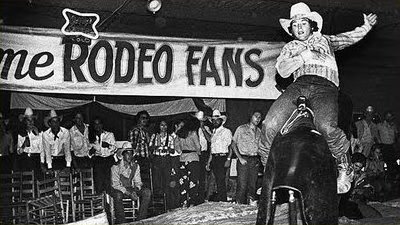 |
During
his tour of the club, Aaron Latham met some interesting Gilley's
regulars including the colorful operator of the mechanical bull.
This guy
was quite a character. The bull operator somehow managed to
talk Latham into trying to ride the mechanical bull. Latham
deserves some credit. It took some real guts to get up there. Beginners
were sure to be thrown.
Latham
was quickly thrown off... and immediately hooked. That bull
would become the star of his story. Latham
hung around
Gilley's for a month, interviewing
everyone in sight and riding the bull (and
getting hurt nearly every
time).
|
Back in those days, Pasadena was nicknamed "Stinkadena" for
the oil refineries and paper plants that brought the area its jobs.
Early on,
Latham decided his story would center around Pasadena petrochemical plant employees
who escaped the monotony of their jobs by playing cowboy
after hours over at Gilley’s.
Of course the bravest of the bunch
liked to prove
their 'cowboyness' by riding the mechanical bull.
The bull was a good place to start, but it wasn't enough.
Latham was searching for a love story.
Then one night, he found what he was looking for. "This girl
came in named Betty Helmer, and she rode the bull standing up,"
Latham said. It turned out that Betty was a
better bull rider than her husband Dew, a guy she had met at
Gilley's. Dew was so mad at his wife for showing him up, he forbade
her to ride the bull anymore. In retaliation, Betty starting
flirting with the mechanical bull operator!
Latham was
thrilled by this soap opera-style nonsense. Now he had a real live love triangle to write about!
A few months after the Esquire article came out, Latham was
hard at work writing the movie script to Urban Cowboy.
That is when Latham discovered the guy who ran the bull was
actually an escaped convict on the lam. Latham was astonished.
The same man who had first got Latham hooked on riding the bull had actually
been a convict hiding in
plain sight over at Gilley's!
Every night hundreds of people
would walk right past this guy without a clue in the world as to his
dark secret. Latham had been fooled just like everyone else.
In retrospect, it made perfect sense to hide
there in this vast indoor badlands. Spending his nights
seducing Betty Helmer and any other woman who caught his eye, the
convict fit right in. This stuff even was better than his own
imagination! It read just like a twisted plot twist from a
Fugitive episode. A writer couldn't ask for more. Gilley's was the gift that
just kept on giving.
Once
Latham got over his shock, he delightedly added this precious nugget to his movie script. The
Bull Operator was no longer just the third wheel in the love
triangle. He was now
the full-fledged bad guy of the movie.
Shakespeare had Much Ado about Nothing. Latham would have Much
Bull about Bull. Modern times call for Modern phrases.
|
The
question is:
Why was this
Gilley's story so urgent to Clay Felker?
Why
would Clay Felker wake a guy up in Washington in the middle of the night, tell him to
get his sleepy butt to the airport, and hop the first plane to Texas
just to go see Gilley's?
I mean, really now, what's the hurry? Couldn't it have waited
a day or two? Gilley's ain't goin' nowhere.
The reason Felker was
so excited about Gilley's during his visit to Houston is now
apparent - Felker had just discovered the opening he needed to make the
next Saturday Night Fever.
This is
what Felker had been waiting for. Felker was about to make his
score. He didn't want to
waste a single second.
Aaron Latham, writer:
"Felker
knew exactly what he was doing. Soon after
the tale was published, sure enough, Hollywood came calling for the rights,
which eventually went to Paramount Pictures. Work began in
December 1978, just two months after my story was published in
Esquire.
So many people wanted to buy it that I was able
to get first crack at writing the script. Before long, I was
taking transcontinental flights to that cruel city (Hollywood) that had
abused the talents of Fitzgerald and Faulkner (but was nice to
me)."
THE FINAL PIECE TO THE PUZZLE
|
Clay
Felker passed away in 2008. Here is an item from his
obituary:
"For
several years, Clay Felker was a
consultant to 20th Century Fox, which transformed several
stories he had edited, most notably "Saturday Night Fever"
(1977) and "Urban Cowboy" (1980), into movies."
Saturday Night Fever
was a Felker inspiration that Robert Stigwood had stumbled onto and
capitalized on. Felker helped Stigwood turn the story into a
movie, but didn't receive much credit. Although Felker was
involved in the project from the start, he was reduced to a footnote
in the Saturday Night Fever project.
Burn me
once, shame on you, burn me twice, shame on me.
Felker kicked himself no end for letting Stigwood get
most of the credit... and money... for this prize that had been his
idea in the beginning. Felker paid attention and took notes.
Felker
was going to make
damn sure he would be the one to capitalize on the next
project.
Like the Holy Grail, Felker
immediately began the search for the next Saturday Night Fever.
And once he found it, he got the wheels rolling pronto.
Urban Cowboy was fast-tracked from the
moment Felker walked into Gilley's.
|
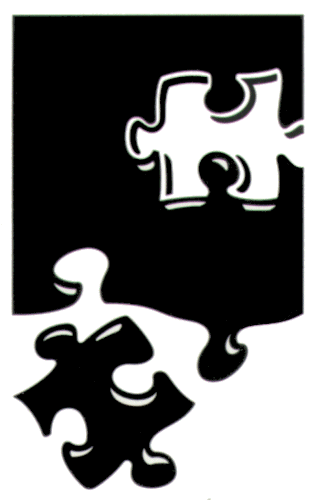 |
|
|
|
|
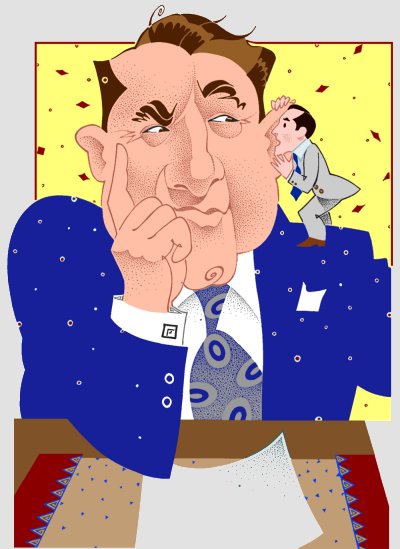 |
THE
GREAT URBAN COWBOY MYSTERY
Let's say you dabble in the stock market. You are an
average guy who does the best you can to stay abreast of the trends.
Suddenly one of your stocks makes a huge jump that catches you
completely flat-footed. Although you benefit from the
unexpected fortune, later you hear
through the grapevine that some fat cat on Wall Street bought plenty
of shares and made an even bigger killing.
So you sit back and wonder to
yourself, "How the heck did he know that was going to happen?"
If you are like me, you assume it is another case of insider
trading.
Rich people... and I am talking the 'very rich'
here... always seem to know stuff before the average guy. They use that
advance knowledge to anticipate developments and cash in. The
advantage always goes to the person who gets there first.
In the case of Urban Cowboy, four different
industries got rich - the movie industry, the country music industry, the western wear
industry, and Houston's local nightclubs. Did I say 'rich'?
Change that. I meant to say 'very rich'.
Were they lucky?
Did they have crystal balls?
Or was there some remote chance
everyone knew something in advance?
|
As I go through life, I see myself as a little tiki raft
buffeted about by the giant forces of the Pacific Ocean. But I
do have a brain. Although I hardly consider myself to be an
investigative reporter, it doesn't take much of an effort to connect
the dots here.
It becomes obvious that Clay Felker was intimately connected
with every part of Urban Cowboy from start to finish.
Furthermore, now that we see that Felker was also involved with
Saturday Night Fever, the coincidence of John Travolta
being involved in both projects no longer seems like much of a
coincidence.
Travolta
was
incredibly popular thanks to SNF and Grease. Based on
the success of the Saturday Night Fever project, now
that Travolta was committed to the new movie, it probably didn't take
much to convince the music people and the fashion people there was a
coming gold mine that everyone could have a stake in.
That, my friends, is called 'Marketing 101'.
Saturday Night Fever was a surprise hit to everyone
involved. However, Urban Cowboy would not be a surprise.
It was a pure sequel to a box office monster.
|
 |
|
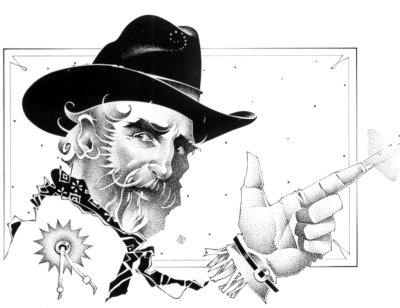 |
This new movie
was the closest thing to stimulus-response the "trend spotters"
had ever seen.
Everyone was so sure the new
movie would be a success that they rushed to
get in on the ground floor. Their advance knowledge of this
project was open license to print money.
Thanks to the coordinated effort by the fashion industry, the music
industry, and the movie industry, the country's amazing
preoccupation with Urban Cowboy began long before the movie
debuted.
And now everyone's 'preoccupation' with Urban Cowboy begins to make a lot more sense.
I have no doubt the amazing cultural trend towards all things
Western was manipulated by little unseen hands from start to
finish. They were pushing our buttons before we ever knew what
hit us.
Too bad
no one let me in on the secret. All those bizarre overnight changes had me
just as confused as everyone else on the street. In Spring
1979, one Disco after another shut down in Houston only to reopen
two weeks later as a Western Club. All these changes were
taking place an entire year before the movie even opened. What
did these club owners know that I didn't know? And now we have
our answer. They had advance knowledge of the coming trend, that's
what.
There I was,
the
little tiki raft buffeted about by the rapid changes taking place
in Houston at the time. As I watched my beloved Disco Dancing
die a horrible premature death, I was not only devastated, I was utterly flabbergasted.
It made no sense...
|
|
|
|
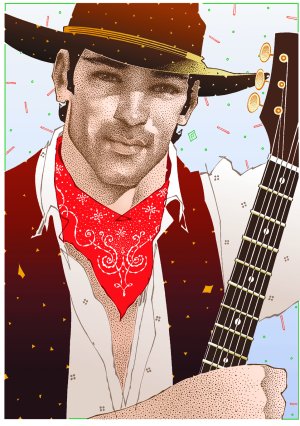 |
WESTERN MUSIC
The story
line from Urban Cowboy was
about as deep as a bottle of Bud Light and as
predictable as a straight line. If not for the presence of
John Travolta, then the hottest movie star on the planet, no one
would have paid much attention. Fortunately, Travolta
added enough Hollywood glamour to draw
attention to the movie.
The pre-release hype and hoopla was extraordinary.
The soundtrack album became the real money-maker of
Urban Cowboy. The soundtrack was released in April
1980 four months ahead of the movie. Thanks to all the fuss surrounding the movie,
everyone was so curious, they went out and bought the album.
By the time the movie debuted in July 1980, the soundtrack was already
Number One. The movie had sold the soundtrack which in turn
helped sell the movie. Pretty clever, huh!?
Since the soundtrack featured the new 'progressive' country
sound, it literally changed the direction of country music
throughout the Eighties. The Outlaw Sound with Waylon,
Willie and Merle was out; Neil
Young and The
Eagles were in. Country music became associated with crossover songs like
"Heart of Gold", "Lyin'
Eyes" and "Peaceful Easy Feeling". This new sound featured singers who could actually sing harmonies
as well as gifted
musicians who introduced more complex rhythms. Some people even
suspected a Disco-influence in the new music. God forbid.
This
music breakthrough allowed new artists like George Strait, Randy
Travis and Reba McEntire to move to the forefront. Labeled
'country pop' by many, the music produced by these artists worked
like a charm. It was a lot easier on the ears of ordinary people
like me who couldn't stand twang or hard core western music.
Now a whole new world of western music fans developed.
|
WESTERN FASHION
Throughout the first seven months of 1980, Houston got itself
wrapped into a tizzy over the debut of Urban Cowboy.
One of the major harbingers of the movie's debut was the radical
change in women's clothing.
I was no
fashion expert, but as my world turned upside down, I could see someone in the design industry obviously had the
brilliant idea to push fancy western wear well before the movie's
debut.
|
What a coincidence! How did these people know 'western
fashion' - previously an oxymoron to the fashion industry - would
suddenly have an audience? That was quite a prediction!
Ralph Lauren and Gloria Vanderbilt of all people were suddenly hot
names in western wear. They were obviously in on the big "Urban
Cowboy" secret.
Some of the
outfits that began to appear in public bordered on the preposterous.
Take the lady in the picture on the right. When was the last
time you saw a woman dressed like that out on the prairie rounding
up cattle? Exactly.
Yet that
picture is a perfect example of what you might see at Cowboy,
the dance club in Houston where all the pretty girls went to make their western fashion
statements.
Pretentious? Definitely. Fun to look
at? Definitely.
The "Cowboy Look" benefitted dramatically from the
resurgence in the popularity of country music. This new 'cowboy
look' incorporated some Hollywood
glitz mixed with rhinestones, Southwestern Hispanic and Native American
styles such as silver and turquoise, as well as fashionable dresses
complete with Indian designs. The jeans became tighter, the
shirts louder, and hats took on the same personalized importance of
boots. Western accessories such as jewelry, fancy boots, and
expensive hats became an obsession with people concerned about
Western style... and Houston had plenty of those.
As country music became more popular, huge Western clothing
super-stores opened throughout America dedicated solely to supplying
the fashion needs of country music's (and country dancing's) new
devotees. It was quite the boom time. When it came to Western
Wear, someone was making a
killing.
|
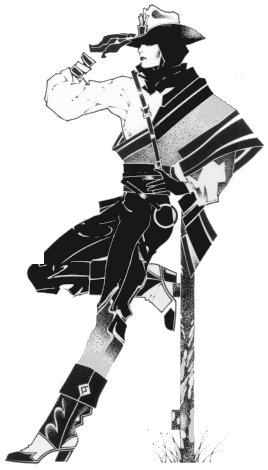 |
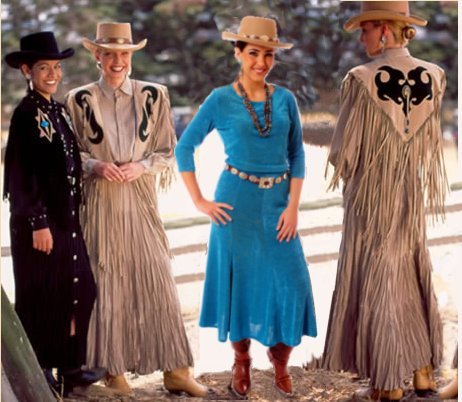 |
The icons
of Western fashion were no longer found in the movies. Roy Rogers and
Dale Evans were out. Now attractive, clean-cut country music stars like George Strait
and Reba McEntire became
the measure for the new cowboy look.
The music people fed the fashion people and vice versa.
You don't suppose the same people owned both businesses, do you?
The new 'Cowboy Look' no longer focused on the Western hero, but
rather was aimed at the American worker who gets duded-up to play on
the weekend. And where do you suppose they got that idea?
You can thank Urban Cowboy.
Throughout 1980 people were going nuts over the clothes.
People were going nuts over the music. Here in Houston,
people's imaginations ran wild. I was incredulous. They didn't
even know if the movie was going to be a hit or not.
All that fuss and the entire time no one had any idea the movie
would turn out to be so vapid. Sometimes 'not knowing' is a good
thing. It allowed all the hype to continue to build without a
reality check.
This was going to be the biggest thing to hit Houston since the
Astrodome! As the famed designer Oscar de la Renta succinctly put it, "Thanks
heavens Texas women love clothes. They are a beacon of what is
wonderful about America."
|
WHO KILLED DISCO?
The
absurdity of the all the Discos changing to Country in the spring of
1979 was that Disco was raging hot in Houston in 1979. There
was absolutely no sign of a drop-off in interest.
So
why on earth would Discos doing great business suddenly take a
gamble on Kicker Dancing in expensive parts of town? This
format had never been successful before.
What most people do not
realize is that Western Dancing DID NOT EXIST in Houston before
Urban Cowboy came along. There was some very small
kicker clubs on the edge of the city, but not one major dance club
had 'western dancing' as its theme.
A dozen
dance clubs were making money hand over fist with Disco, and yet this
same dozen clubs
were willing to trade in a sure thing for an unknown
product. The Disco crowd was stunned. Why? No one in my group had ever been Western dancing in our lives.
We all looked at each other and went 'huh?' It was
utterly incomprehensible.
On the
surface, it didn't make any business sense whatsoever. None of
us could figure it out. We didn't have the slightest idea what
was going on, but we all suspected it must have something to do
with Urban Cowboy. There was nothing else
that could remotely explain this strange mystery.
|
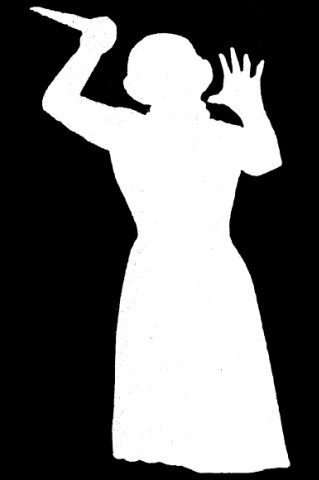 |
When the
movie finally did come out, one of the scenes had
Travolta taking his rich new girl friend to élan
for a night of disco dancing. élan was the most elegant Disco in
Houston. When I recognized élan in the movie, a dark smile crossed my face. How interesting.
I used to go
dancing at élan all the time.
In fact, I blamed the owner of élan for the murder of Disco.
He was the Prime Suspect!
|
|
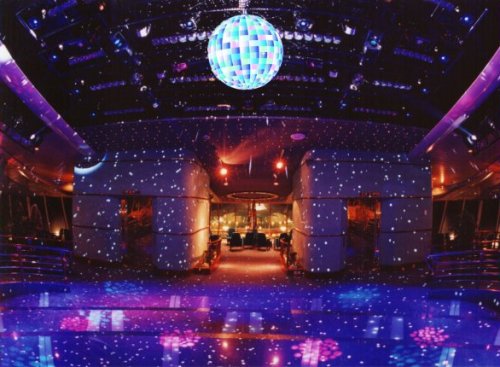 |
élan élan
was home to Houston's rich and famous. It was the place
you went to see celebrities. I was dancing there one night
with my girlfriend Victoria. Victoria screamed when she spotted Bill Blass, the famous designer,
dining on one
of the lower levels as we walked by. She gasped in awe. Apparently
Bill Blass was one of her big heroes. Another time I spotted Rick
Barry, a Hall of Fame basketball player who briefly played for the
Rockets. At 6' 8", he was pretty easy to notice.
élan
had five different split levels. What was unique about these levels
is that they allowed you to look up and check out the action or look
down and check out the action. It took a very imaginative
architect to create this multi-layered effect. Depending on
what level you were on, you had separate areas designed for
continental dining, dancing, drinking, backgammon games, and even
quiet conversation. And how do you have a quiet conversation
at a loud Disco? A zoned sound system customized the decibel
level for each specific area. The place was so very elegant.
|
One Halloween night at élan, I had the most fun
dancing of any single evening in my entire life. I did something very
daring... I went dancing in a skin-tight outfit.
It was 1978 and élan had a Halloween Party complete
with permission to wear costumes. Ordinarily I am overtly
modest. However, this event afforded me an unusual
opportunity.
|
My dance
teacher Glen had this amazing skin-tight leopard costume that one of
the men in his jazz dance company used for his 'Jungle Madness'
number... a man's version of the picture on the right. I had wanted to wear that costume for the longest time
because I knew it would look good on me. Back in those days, thanks
to my love of basketball, I was
pretty well-built. However, I was much too modest to wear
anything that sexy. I didn't dare wear it because everyone would
know it was me.
On the other hand, this costume came complete with a mask
that you could pull over your head. The mask would disguise my
face completely. That gave me an idea. Why not go to élan
by myself, wear normal clothes and put the costume on there?
So that's what I did. I changed in the restroom and
went out to dance floor as the masked Leopard Man. Unfortunately, I
immediately recognized a half dozen students of mine scattered
throughout the club. So I had to add "silence" to my new persona
or face the teasing over my wild outfit all night long. Now I
refused to speak to anyone. That made it a little tricky to dance.
How do you ask a woman to dance without asking? Finally I used
sign language... I went up to a woman and pointed to the dance floor.
After that it didn't matter. From that point on, the women did the asking.
I was easily the best male dancer in the entire building. For
one thing, I didn't have any competition. Rich guys can't dance a
lick. For another thing, once I was behind that mask, I became
totally uninhibited. I moved my body any damn way I pleased.
I was erotic when I felt like it, but never vulgar. Whatever I
did, it seemed to have a positive effect on women. I was quite the
center of attention.
Women came up to me all night long to ask Leopard Man to dance.
As they watched me move, their eyes went from head to toe.
Watching them lick their lips and grin with excitement, I could tell they liked the
show. And I liked their smiles. What an ego trip! I was being
rewarded for daring to show a side of my personality that ordinarily
I would never
dream of revealing in public.
|
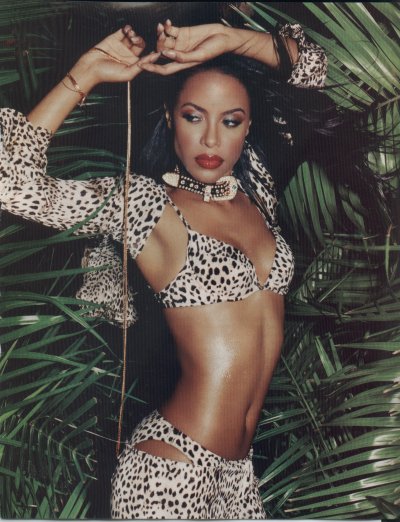 |
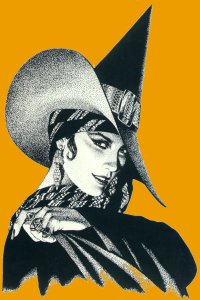 |
People came up to talk to me all night long. However I
refused to speak. I would simply draw a line across my mouth to
indicate Mum was the word. That didn't stop people from
talking to me. Like a party game, people wanted to identify my
secret identity. For example, all night long women called me by
different names. I simply shook my head no. Even women who
knew me were left guessing. They were certain it was me, but I
shook my head no. Watching their frustration, I was having a lot of fun with this.
Since no one at my studio had ever seen me dance like this
before, my secret identity stayed safe for most of the night.
My mistake came when I decided to partner dance.
Unfortunately partner dancing requires a partner who knows what she
is doing. I picked a lady from the studio who had been
suspicious of me all night. Now she knew it was me. Once
I was out there, a second woman and her husband also recognized my
style and nodded. I didn't mind... I wanted to partner dance!
Finally I gave in and whispered the truth to all three people.
I swore them all to secrecy. With my
secret identity intact, I spent the rest of the evening dancing with the
two ladies. Now I received a new round of attention.
People cleared the dance floor to let Masked Leopard Man spin the girls and
put on a superb show of dancing. What a night. It was fun to
be the star.
In case you are curious, no, I didn't cash in on my brazen display
of lewd dancing. That really wasn't what I come for. I went to
élan to dance the night away. I loved dancing to
Disco music. Too bad it had to die young.
|
LANCE
MCFADDIN
élan
was the crown jewel in a series of Houston nightclubs owned by a company
named McFaddin-Kendrick in the Seventies and Eighties. Besides élan,
there were many others.
Confetti,
Studebakers, Foxhunter, Ocean Club,
Acapulco Bar, Todd's,
Rialto, and Cowboy were all well-known
McFaddin-Kendrick properties here in Houston.
I remember visiting every
one of those clubs. Each place was lavishly decorated,
were located in fashionable locations near the Galleria, and were
professionally operated. Now that I recall, maybe the clubs were
run a little too professionally.
I ran across a
snippet in Wikipedia that made me smile.
"During the Disco
Era of the Seventies, McFaddin Ventures in Houston, Texas,
commissioned a study on the stimulation of males and females
during the playing of music. They accordingly custom-tuned their
speakers to make their numerous properties more exciting. Karin
Cook, their music programmer and head disc jockey, trained other McFaddin Ventures
disc jockeys to work the music format - 6 up, 3 down - as a way to
sell more drinks.
In other words,
the people of McFaddin made it their business to know their business, even
down to which Disco format sold the most drinks. They
were in it to make money and were willing to manipulate every angle to find an
advantage.
I had
a long-time love-hate relationship with élan.
I have never seen a more beautiful place to dance in my life. If
Gilley's was hell, then élan was
heaven. I was more than willing to shell out $450 per year for six
consecutive years to belong to this exclusive private membership club.
Mind
you, Susie, my beautiful girl friend, got in for free. I
was there when some man stopped her one night and offered her a free membership. That's how I learned they handed out free memberships to
beautiful SINGLE women all the time. It was a very interesting way of stocking the
pond. Nor were they discrete about it. This was done
right in front of my eyes. My girlfriend was now
officially 'bait' for the rich businessmen to hit on. Needless to say, Susie had way too much fun with that
one. I was so ugly I had to pay. Thanks, Susie.
But
that wasn't the reason I hated élan. The arrogance
and consistent rudeness on the part of their staff was
intolerable. Yes, they had a wonderful product, but that
was no reason to treat paying customers with disrespect. It
was so consistent I began to wonder if it was part of the act.
One night
I had a very awkward run-in with the staff when I tried to bring
in five of my Disco students as guests. Thanks to my
membership, I had the right to bring in four guests at a time. That's why I
joined the club in the first place. Visiting this veritable
palace was an excellent way to socialize with my dance students
and have fun in the process. It never dawned on me they would
quibble over one extra person. I apologized for my mistake
and asked if they could just bend the rule this one time.
No. How absurd. So we all left in protest.
I had
two incidents where my students were turned
away for dress code violations. I was angry because
other people wearing identical clothing were walking in with
impunity.
The
second incident infuriated me the most. Based on the
standards they had set during the first incident, I had
personally told one of my guests their clothes were not a
problem. Wrong. No matter how hard I protested, they
didn't budge. Needless to say, I felt terrible watching my
humiliated student trudge back to his car. Since this had
happened more than once, I became suspicious. I guessed
that some of my guests
didn't meet their 'attractiveness standards'.
|
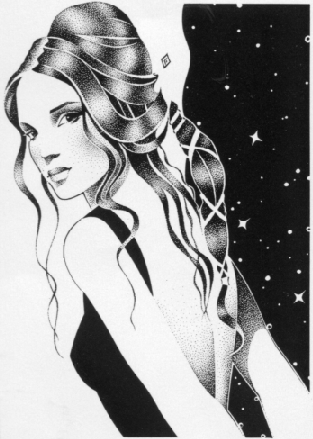 |
Incidents
like these were the main reason I began to dislike the
people who worked at élan.
However, there was more to it than that. In
general, I always felt their staff used 'snippy' where
'courtesy' would have worked much better. Did they simply
hire snooty people and turn them loose or did they actually
train people how to be haughty?
The climate of
iciness was so pervasive that I began to wonder if that attitude
was deliberate. I actually began to suspect it was a
cynical management technique used to create the illusion of
'exclusivity'. Why not turn a few people away on a nightly
basis to prove how
special our club is!
You can't have an 'in-crowd' without an 'out-crowd'. Just
like I didn't appreciate élan using Susie to stock
their 'in-crowd', I didn't appreciate élan using
my students to stock their 'out-crowd' either.
I can't be sure where their staff's "I'm superior" attitude
originated, but I was actually tickled when the place shut down
in November 1984. They sent me an announcement in the
mail. I still have that announcement. It hangs on
my wall at home. I added this inscription - "It pays to be
nice to people. Let élan's fate be a lesson. Good riddance."
My
negative experience with élan is how I first
became aware of McFaddin-Kendrick. I began to
associate that name with incredible taste paired with cynical
business tactics. However, my resentment didn't stop me
from visiting their expensive establishments. If anything,
I was now extra curious about their business.
McFaddin-Kendrick
was on my radar.
|
WESTERN DANCING
REPLACES DISCO IN HOUSTON
Saturday Night Fever created the surge of interest in
Disco Dancing after its release.
Oddly enough,
Urban Cowboy created its surge of
interest in Western dancing before its movie
release.
Many people expected
Urban Cowboy
would revolutionize Country-Western dancing the same way that Saturday Night Fever
had taken Disco to another level.
As it turned out, the prediction was correct, but for all the
wrong reasons. Even though
the dancing in Urban Cowboy was
unbelievably lame, the movie still managed to put Country-Western Dancing on
the map nonetheless.
So how
did this freak situation happen?
|
Thanks to
the eerie similarities between Saturday Night Fever and Urban Cowboy,
the movie was expected to feature awesome Western dancing.
The Houston papers buzzed with stories about how John Travolta took
Western dance lessons to prepare for the movie. Everyone wondered out loud if Travolta would
do the same thing for Western dancing that
he had previously done for Disco dancing. Thanks to Travolta's
presence, everyone assumed that lightning would strike twice.
Amazingly, the "Expectation" was all it took. The Western
Dance Phenomenon became a self-fulfilling prophecy.
Everyone started to Western dance before the movie was even
released because they assumed it would become popular.
After all, with all those Western Dance Clubs opening here in
Houston well before the debut, someone clearly expected Western
Dancing to become popular. If they build it, they will come.
As it turned out, Travolta's dancing in the movie made no
difference whatsoever. The deed was already done. The
"expectation" had worked its magic ahead of time.
By the
time the movie was released, the wildfire surge of interest in
Western dancing was already out of control. This created a very amusing situation.
When Urban Cowboy was finally released in July -
easily the most highly anticipated event in Western civilization
since the Second Coming - the
average nightly dancing in Houston's country dance clubs was already
superior to the dancing in the movie!
So, yes,
the hype surrounding Travolta was the initial catalyst for the
upswing in Western dancing. But for Western Dancing to
succeed, Disco had to die.
In regards to the murder
investigation into the Death of Disco, I had a prime suspect. His
name was Lance McFaddin.
|
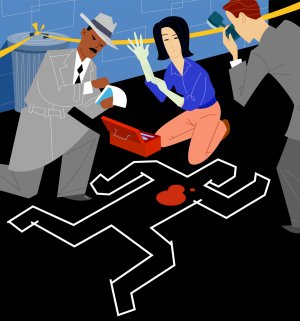 |
MCFADDIN AND THE
WESTERN DANCE CLUB BANDWAGON
When it came to
the Death of Disco, it is my guess that Lance McFaddin of Houston-based McFaddin-Kendrick
was involved.
Although everything I
am about to write is pure speculation,
it might be time to give the guy some credit for creating a
national phenomenon.
I am fairly
certain that Lance McFaddin played a key role in the curious Disco Club-to-Western
Club chain reaction.
Although John
Travolta got all the attention in the media, when it came to Western
Dancing, Lance McFaddin probably did more to create the upsurge than
Travolta himself. Working behind the scenes, McFaddin personally
created the domino effect that resulted in over a dozen Disco Clubs going Country overnight
in the spring of 1979.
Here is some of the evidence. I have paraphrased a
1981 article in Time Magazine titled "Living: C&W
Nightclubs Riding High" written by Michael Demarest.
|
"In 1975 Houston had at most a dozen cactus cabarets.
By the time 1981 rolled around, Houston now had more than 300, few of which cared to
emulate Gilley's Dodge City outlaw style.
In February 1979,
McFaddin-Kendrick, a Houston-based conglomerate, opened
Cowboy, the city's first upscale Twostep saloon. Following its success with Cowboy, McFaddin-Kendrick
then went on to launch a national chain of 40 western barns that
mixed country music with disco."
Cowboy's success revolutionized the club industry. Before then, there was no such thing as a "classy"
country place. It used to be your choices ranged from
your standard
country dump #1 to your standard country dump #2.
No one recognized the market for
"attractive" western clubs even existed. For that
matter, no
one had any idea you could successfully mix disco with
country and western under one roof without people killing
one another.
However, once Cowboy took off for the moon in
typical Space City fashion, everyone else jumped on the
bandwagon and opened Cowboy imitations.
The most successful,
Fool's Gold and San
Antone Rose, were located in affluent Houston residential
areas and, like Cowboy, catered to the Gucci gauchos.
Imitation proved to be the most sincere form of flattery."
|
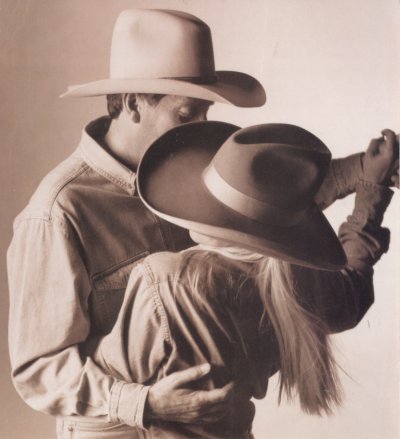 |
THE MILLION
DOLLAR GAMBLE
|
Cowboy
was,
of course,
the expensive gamble that had paid off big for McFaddin-Kendrick
in February 1979. Urban Cowboy debuted in
July 1980.
There was
quite a time gap between the opening of the club and the opening of
the movie. I counted the months
forward. Cowboy
had opened 17 months before the movie was even released.
That was some pretty impressive foresight. Lance McKendrick would
have to have a gypsy on his staff to see that one coming.
Based on
my experience, the rule of thumb says 'Six Months
Minimum'. This process includes finding a location, getting
funding, getting the architect's design, getting permits and then
the final build-out. McFaddin probably already had the funding plus
it was able to
save time by simply converting one of its prime Disco locations.
So I counted backwards. Assuming that Cowboy was
fast-tracked, six months earlier meant the initial planning
for Cowboy would have taken place in August 1978.
Now that
was interesting. Aaron Latham's "Ballad
of the Urban Cowboy" appeared in the September 1978 issue of
Esquire Magazine. This meant the planning for the
nightclub Cowboy
was probably predated the article itself. It sure helps to have
those psychics.
Robert
Stigwood had read the Saturday Night Fever article to
get his idea for the movie. That was not the case here. The
western dance club Cowboy was already in the works before the
Urban Cowboy article was even published.
|
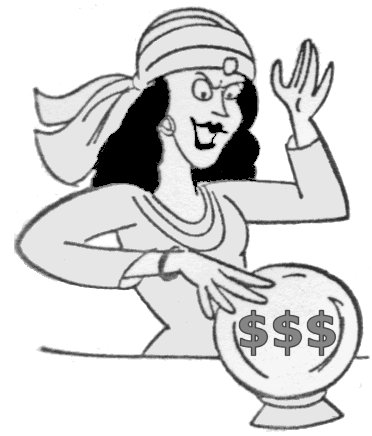 |
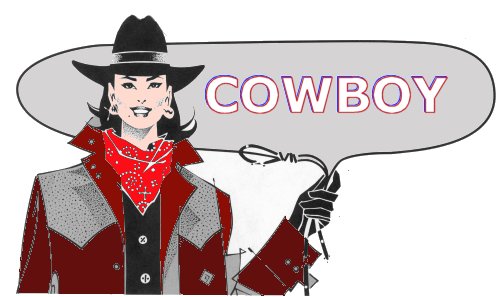 |
Something
very sneaky was going on.
Lance McFaddin wasn't reacting to something, he was anticipating
something!
August
1978 was the absolute height of the Disco Era. The Discos were
raging at a fever pitch.
And yet in the very midst of
Disco Inferno, someone at McFaddin-Kendrick had the
inspiration to axe a highly successful disco club and replace it
with some kicker club in the middle of the
Galleria... yeah, sure. And I have some swamp land to sell. C'mon
now. Someone had to know something.
This was a preposterous gamble,
a desperate "are you out of your mind?" kind of idea.
|
|
The new club had to cost at
least three million dollars... plus all that money down the drain
from designing and decorating the successful disco that was being
canned.
All this for an experimental club format - upscale Western dancing
in a ritzy neighborhood - that had never been tried before. You would need quite a
crystal ball for that kind of gamble. It's just like stuff you
read on the Internet. If something you read or see seems too
impossible to believe, then don't believe it.
On the
other hand, what if Lance McFaddin knew something that other people didn't?
Then the gamble begins to make more sense. You don't
suppose Mr. McFaddin had some inside information, do you?
Mind you,
this is all speculation. I could not find one story that
connected Sherwood Cryer to Lance McFaddin. But if I had some money
to bet, I would put some of it on Sherwood Cryer. Sherwood Cryer
must have known something. Several articles about Cryer
indicated he was the only man
in Pasadena who thought a movie was possible. Everyone else
thought he was full of youknowhat.
Mickey Gilley
wrote that Cryer kept insisting that something was going down.
However, Gilley said he didn't believe a word the man said.
Cryer was just an old man grasping at fame. In fact, after
Gilley read Latham's article in Esquire, he was pretty angry.
Gilley confronted Cryer with the article.
Gilley
said he thought Latham's article was condescending and negative.
Gilley said in disgust there was no way some nasty article about a
bunch of lowlifes in "Stinkadena", the unpleasant nickname for
Pasadena, was going to lead to some movie.
Sherwood Cryer strongly disagreed. He
told Gilley to shut his mouth and keep his thoughts to himself.
According to Gilley, Cryer said bluntly, "Hey, buddy, you don't need to
run that article down. Somebody just might make
a movie out of it."
|
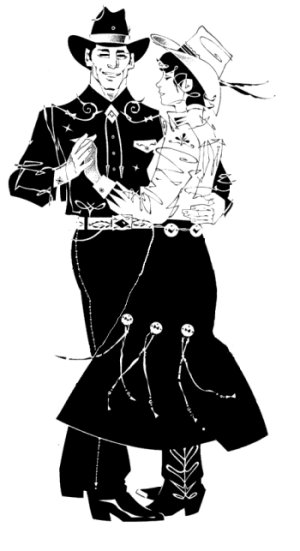 |
|
THINGS BEGIN TO
MAKE MORE SENSE
Sherwood Cryer was the man who had
talked to Clay Felker at length on that fateful night back in July 1978
when Felker had his vision. Quite likely, Felker took Cryer
into his confidence and explained this story could very easily lead
to something big. During the month that Aaron Latham hung out
at Gilley's, Sherwood Cryer could easily have passed on the tip to his buddy Lance McFaddin over in the
Galleria.
Or for
that matter, maybe Aaron Latham connected with McFaddin. After
all, Latham included a visit to McFaddin's élan in his
screenplay. Surely at some point Latham and McFaddin
crossed paths. Or perhaps Clay Felker connected directly with Lance
McFaddin during the planning stages of the article. In the
month while Aaron Latham was
writing his story, Felker was already promoting the movie. The
point is this - all signs indicate that McFaddin was tipped off
early in the game.
Inside
Information - I have long suspected that's how the big players make
their money. They know what's going to happen before I do.
That's why they are rich and I am poor. To the insiders go the
spoils, to the uninformed goes the chance to write about what he
missed out on.
The
whole affair was curious. As conspiracies go, I am not
sure the 1979-1980 Western upsurge can be ranked up there
beside the murky Trilateral Commission, but the evidence
strongly suggests there were
some key players who knew things ahead of time.
Someone predicted the change in the country-music tastes two years before the movie appeared.
Someone predicted the demand for upscale Western fashions two years before the movie appeared.
Someone anticipated the success of an upscale Western dance club
two years before the movie appeared.
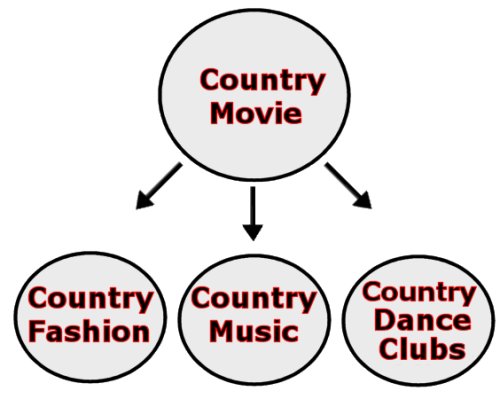 |
Two years
is a long time. Dumb
luck? Good guess? Lucky
prediction?
None of the above. It was Clay Felker looking to repeat
his success with Saturday Night Fever. Once he found
his vehicle, he brought his circle of friends together, laid out his
vision, and helped make it happen. The man who created a Disco movie
can create a Western movie. Cut and Paste.
I don't
know how or when Lance McFaddin first heard about the project, but I
would bet the farm he was in on the Big Secret even before
Latham's September 1978 article was published.
How
else would would McFaddin-Kendrick have Cowboy,
the company's
daring new concept, ready to open 17 MONTHS before the movie was even released?
For that
matter, lots of people were in on the Big Secret.
How else can you account for the remarkable coordinated effort well
ahead of movie's release?
Synergy occurs when the result is greater than the sum of the parts.
Synergy is created when things work in concert together to create an
outcome that is of more value than the total of the individual
input.
Country
Music - Country Fashion - Country Club - Country Movie. That
amazing four-way alliance was pure "Synergy".
|
COWBOY REVISITED
Cowboy,
Lance McFaddin's golden gamble, was a powerful example of the
success that came from tapping into the Western Synergy.
Cowboy was the first-ever country-western dance club to go upscale. No one had ever thought of
mixing the Prairie and the Galleria before.
What an
enormous gamble! Putting a
country dance club in a pricy spot like the Galleria would
take a lot of guts... unless maybe you knew something, of course.
|
By creating the
very first uptown, country-chic bar in the middle of the
Galleria, Houston's fashion mecca, Cowboy's
success could be attributed to the uncanny prescience of being
in the right place at the right time... and way ahead of
everyone else.
Cowboy was the first dance club to feature the new
"progressive" country sound being peddled by the movie.
Even more remarkable, he made this prediction eight months before
the new music even hit the market! How did McFaddin-Kendrick
so accurately predict this major shift in the direction of Western
music?
Of all
the changes that took place, none was more remarkable than watching
Gloria Vanderbilt jeans suddenly compete with Wranglers.
Anyone who knows anything will tell you that fashion and country
don't mix. Just because it is named "Rodeo Drive" in Beverly
Hills doesn't mean a socialite would be caught dead wearing rodeo
clothes in Hollywood... that is, not until 1980 came along and
changed the fashion landscape forever. This was a radical shift.
Who would have ever guessed?
Lance
McFaddin guessed right. Location. Location. Location. His new
upscale club was placed smack dab in the Galleria. He made sure to
decorate his club so lavishly that Houston's fashion-conscious
ladies would feel completely at ease. This meant the ladies could shop at the
Galleria for the latest in upscale Western fashions, then simply
stroll across Alabama Street to Cowboy
to have an evening margarita wearing their brand new stunning western outfits. Brilliant!
Such vision!
And what
would the fashionable ladies talk about with a Crystal Gayle song in
the background? Why, the upcoming Urban Cowboy
movie of course! What else was there to talk about?
|
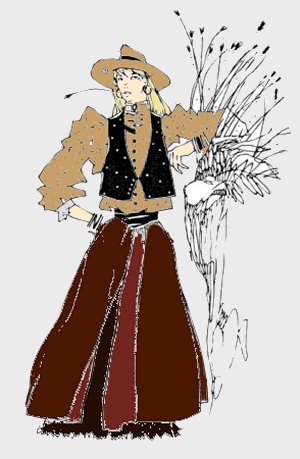 |
WHEN WORLDS COLLIDE -
URBAN COWBOY MEETS SATURDAY NIGHT FEVER
|
|
|
 |
Rick Archer's Note:
The
main purpose of my article has been to answer this question:
How on
earth did a complete dump like
Gilley's ever become the national symbol for
popularity?
We now know that Clay Felker came up with the
short end on Saturday Night Fever. After that, Felker
made it his goal in life to find a sequel. Gilley's of all
places turned out to be the place Clay Felker had been looking for.
Unfortunately, I was unable to locate any anecdotes that dealt with
Felker's wheeling and dealing once he began his Urban Cowboy
project.
There were no articles I could find that explained the full extent
of his role in creating the movie Urban Cowboy.
That said, by connecting the dots, it becomes obvious that Felker
brought in the Fashion people, the Movie people, and the Music
people to create a coordinated effort in support of his Urban
Cowboy project. Felker was probably involved with
Urban Cowboy from start to finish. This movie was
his baby.
|
There is one final question that must be asked.
Who was responsible for making the illogical shift from a dump like
Gilley's to a palace like Cowboy?
Whose
idea was it ? Was it Lance McFaddin? Was it Clay Felker?
Or was it somebody else we don't know about it?
I invite
you to study the two pictures on the right. On the top, you
see the fashionable world of preppie cowboys and cowgirls, the kind
of urban professionals you might have met at Cowboy thanks to
the Urban Cowboy influence that permeated 1980
Houston.
Below you
see all the markings of a Gilley's-style western honky-tonk
complete with bikers, pool players, fights, and working class
dancers.
These are
two totally different worlds. There was nothing in Aaron Latham's
original story that connected them.
Somebody had the idea to jump from hick to chic.
Clay
Felker? A Hollywood movie guy? A New York fashion lady?
A Nashville music executive?
Saturday Night Fever at least took advantage of an actual
urban trend towards Disco. But there was absolutely no trend
whatsoever towards taking Western upscale.
I contend
this entire cultural phenomenon was created behind the scenes by
someone in Felker's inner circle. Someone in New York had a
clever idea. From that point on, the Synergy Group started
pushing the right buttons.
|
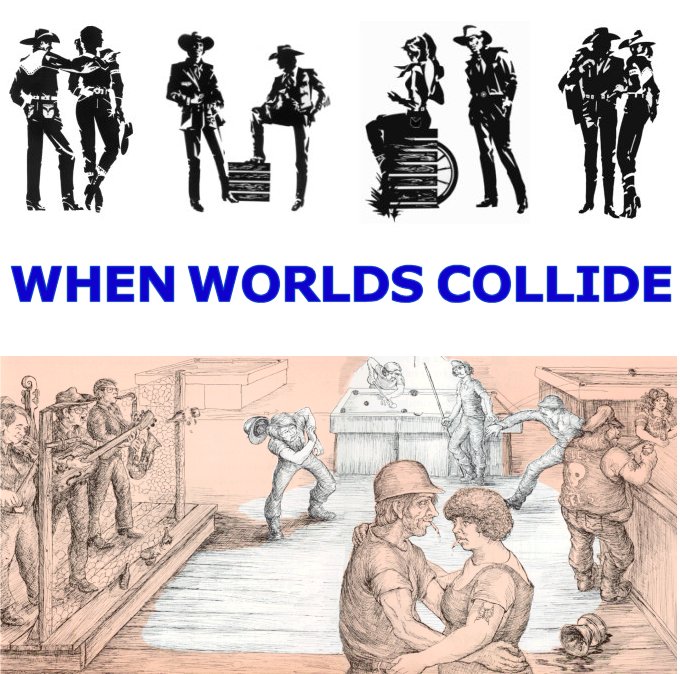 |
URBAN
MEETS COWBOY,
NEW YORK
MEETS TEXAS
|
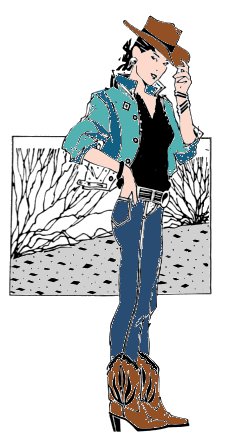 |
Urban Cowboy was little more than a cut and paste clone of
Saturday Night Fever disguised inside a Western theme.
The two movies were linked from the very start.
What
would happen if you owned an expensive Disco and someone told you a
movie named Urban Cowboy was on its way? Your
clientele include beautiful women wearing the latest clothes and
well-heeled urban professionals who like to chase beautiful women.
The Disco is making money hand over fist. Do you ditch the
Disco completely and open up a dump like Gilley's in the
Galleria? Or do you look for some kind of compromise?
You
compromise. When Saturday Night Fever and
Urban Cowboy met the Galleria, you got Cowboy,
plain and simple.
Thanks to
the world of hip, sophisticated, New York professionals like Clay
Felker and Aaron Latham meeting with the world of country folk like
Mickey Gilley and Sherwood Cryer, two totally different worlds
collided. New York met Texas head on. Houston, Texas,
was right in the middle of the collision. Our city would be
changed forever.
There was
one particular man right in the middle of the crossroad - Lance
McFaddin. McFaddin was the perfect synthesis of the business
savvy of the New York people and the business savvy of Sherwood
Cryer. He instinctively understood the next step called for an
upgrade on the Gilley's concept. Where McFaddin was
particularly bold was taking a chance on mixing the popular Disco
music of the day right along side Western music.
|
Aaron
Latham first suggested this idea in the scene where he had Travolta
take the rich Houston girl dancing at élan. Maybe it
was indeed possible to mix the world of Disco - Travolta SNF
- and the world of Country - Travolta UC.
Powerful symbolism.
Once
McFaddin made his move, the rest of Houston's business community got
wind of "The Big Secret". From that point on, the entire
Houston business community was more than willing to participate in
the Western synergy. The changing of the Discos to Western
clubs was the most obvious sign that Houston's movers and shakers
had all hopped on to the Urban Cowboy bandwagon.
Urban Cowboy has often been referred to as "the anti-Disco"
movie. So what happens when you mix matter and anti-matter?
For starters, you get one heck of a confused city, that's what.
The mixture of two cultures - Disco and Western - caused a definite
rift in my hometown's space-time continuum. One sad casualty of
this confusion was Disco which died a miserable death in Houston a full year earlier than it did in the rest of of
America.
However,
the Death of Disco wasn't Lance McFaddin's fault like I first
believed. As I learned 30 years later during my research for
this article, McFaddin probably had no intention of damaging his
crown jewel élan by turning it into a Western joint.
All he was doing was take advantage of "The Next Big Thing". Cowboy was simply a shrewd
investment poised to take advantage of
the coming changes. I imagine McFaddin assumed Houston was
big enough to support two different music and dance concepts
simultaneously.
I might
add McFaddin's concept for Cowboy had included Disco music as
well. However, in the stampede to create all the new Western
clubs practically overnight, McFaddin's message got lost in jumble.
The other clubs forgot to include Disco in their new format.
You can't
have Disco Dancing without Disco music. Choked off from the
music, Disco
died young here in Houston. It was a cruel and totally
unnecessary death. Oddly enough, however, Disco lingered in the netherworld.
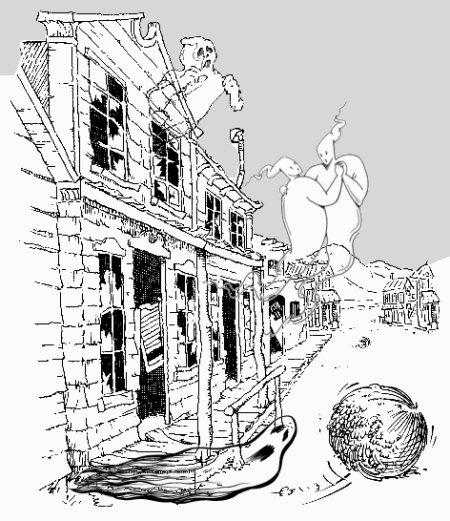 |
Soon enough, the Ghost of Disco would come back to haunt
Houston.
Once all
of Houston's Disco dancers discovered how boring the Twostep was,
they began to experiment with ways to make the dance more exciting.
Pretty soon, the ex-Disco dancers had found a way to add turns to
the Twostep and Polka. The men had discovered a way to add
Disco-like double turns to western dancing. Best of all, the
women loved it! The turns were flashy and exciting.
This new development caught on like wildfire. Within months,
all over the western dance floor, women were turning themselves
silly and smiling in the process. The centrifugal force of the
spins made their dresses swirl up and their long hair magically
float in air. Any man with a brain watched to see just how far
those dresses would rise. For the first time, the Western guys
discovered the same thing the Disco guys had known for a long time -
it's a lot of fun to watch women spin!
From the
ashes of Disco, a new, far more sophisticated form of Western
dancing had emerged here in Houston. Some people called it
"Twostep with Turns", but I didn't think that name did justice to
this new phenomenon. After all, an entirely new dance form was
emerging right before our eyes.
Thanks to the excitement
generated by Urban Cowboy, the whole city was
experimenting on a nightly basis with an exciting new type of
Western dancing that added turns and famous Disco moves like the
Pretzel, Lariat, and Rope to the mundane Twostep.
Here at
my dance studio in Houston, I decided to give these fancy turns a new
name. I called it "Western Swing" in honor of the
up-tempo Texas dance music made famous by Bob Wills back in the
Thirties.
|
The name fit like a glove -
Swing
dancing to Western
music. To me, Western Swing was "Disco on the Run"...
Disco-style spins mixed with the traveling motion of the Twostep.
If we could
have Swing music and Swing dancing, I didn’t see any reason why we
couldn’t have Western Swing music and Western Swing dancing
as well. So that’s what I named it thirty years ago here at
my dance studio. My name was certainly an
improvement over "Twostep with Turns".
The collision of Urban Cowboy and
Saturday Night Fever here in Houston had produced a new dance:
Western Swing.
Western Dancing would never be the same.
RA
June 2010
|
|
|
|
|
|